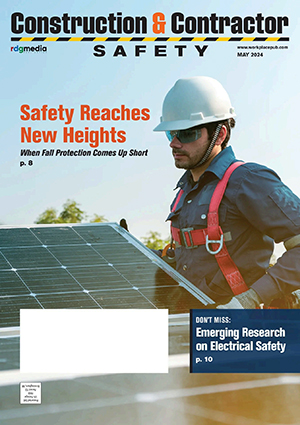Listen Up! From the NHCA Experts…
A Good dBA TWA Makes Your Day!
According to OSHA’s 29 CFR 1904.5(a), professional supervisors (PS) “must consider an injury or illness to be work-related if an event or exposure in the work environment either caused or contributed to the resulting condition or significantly aggravated a pre-existing injury or illness.”
For a PS of audiometric monitoring, determining hearing threshold shift work-relatedness includes many steps. Once a worker presents with a standard threshold shift (STS) confirmed by a valid retest, the PS reviews the worker’s audiogram history. If the configuration and progression are consistent with noise-
induced hearing loss, a critical next step is to consider the worker’s occupational noise exposure.
The Dobie Noise-Induced Permanent Threshold Shift (NIPTS) Calculator is a tool used to estimate the expected median hearing loss from an individual’s noise level and exposure duration. The chart, below, provides an example of a 60-year-old male employee with an 11dB STS and a reported 8-hour, time-weighted average (TWA) exposure between 85-107dBA. To assess NIPTS, the PS must ask for either a single-number dBA TWA or know how long the employee works at each noise level. Without this, the PS must assume the exposure could be the highest level in the reported range, which is 107dBA (Column A). In this example, the NIPTS calculator predicts that 4.54dB of the employee’s 11dB STS comes from occupational noise exposure. Therefore, most audiologists or physicians would not be able to rule out workplace noise exposure as contributing to the resulting STS.
However, if the true noise exposure is 88dBA TWA (Column B), the predicted contribution from occupational noise exposure is reduced to 0.86dB of the 11dB STS. If all other factors are considered, work-relatedness could potentially be ruled out as contributing to the resulting STS. As this example shows, a single-number TWA supports accurate work-relatedness determinations. IHW
Marjorie Grantham, Examinetics, is an Audiologist & National Hearing Conservation Association (NHCA) Expert. Visit NHCA at: https://www.hearingconservation.org/
Share on Socials!
Avoiding Prolonged Noise Exposure
Communication is Key to Safe Confined Space Entry
The Exciting World of Safety Wearables: Protect Your People
Leaders in Industrial Hygiene
Council for Accreditation in Occupational Hearing Conservation (CAOHC)
Subscribe!
Sign up to receive our industry publications for FREE!











